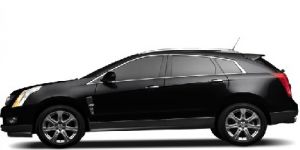We all have seen pictures of a driverless car, loaded with quite a bit of equipment on top of the car to help in the autonomous nature of the car. On June 24, researchers from Carnegie Mellon University brought their next generation driverless car to Washington, DC at the request of Congressman Bill Shuster of Pennsylvania.
 This next generation car doesn’t look much like it’s predecessor, BOSS, who won the 2007 DARPA Urban Challenge. Rather, it looks more like any “ordinary” car, as its top-of-the-line radar, cameras, sensors and other technologies are built into the body of the vehicle. The car’s computers are tucked away under the floor.
This next generation car doesn’t look much like it’s predecessor, BOSS, who won the 2007 DARPA Urban Challenge. Rather, it looks more like any “ordinary” car, as its top-of-the-line radar, cameras, sensors and other technologies are built into the body of the vehicle. The car’s computers are tucked away under the floor.
The goal of CMU’s researchers is simple but important: To develop a driverless car that can decrease injuries and fatalities on roads. Automotive accidents result in 1.2 million fatalities annually around the world and cost citizens and governments $518 billion. It is estimated that 90 percent of those accidents are caused by human error.
Dr. Raj Rajkumar is the lead Investigator at Carnegie Mellon working on autonomous vehicles, supported by the National Science Foundation (NSF), the U.S. Department of Transportation, DARPA and General Motors. His research spans the field of cyber-physical systems (CPS). It is through the great advances in the field of CPS over the past decade that have made autonomous vehicles possible. In the recent DC test, not only did the car work within it’s own systems, but it also communicated directly with traffic lights to better understand the conditions ahead, a feat only possible with the great advancements in CPS.
Read more about this new autonomous vehicle in the NSF Press Release.









